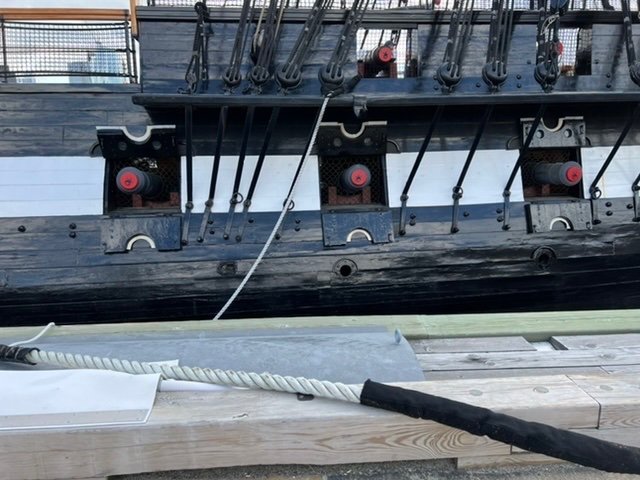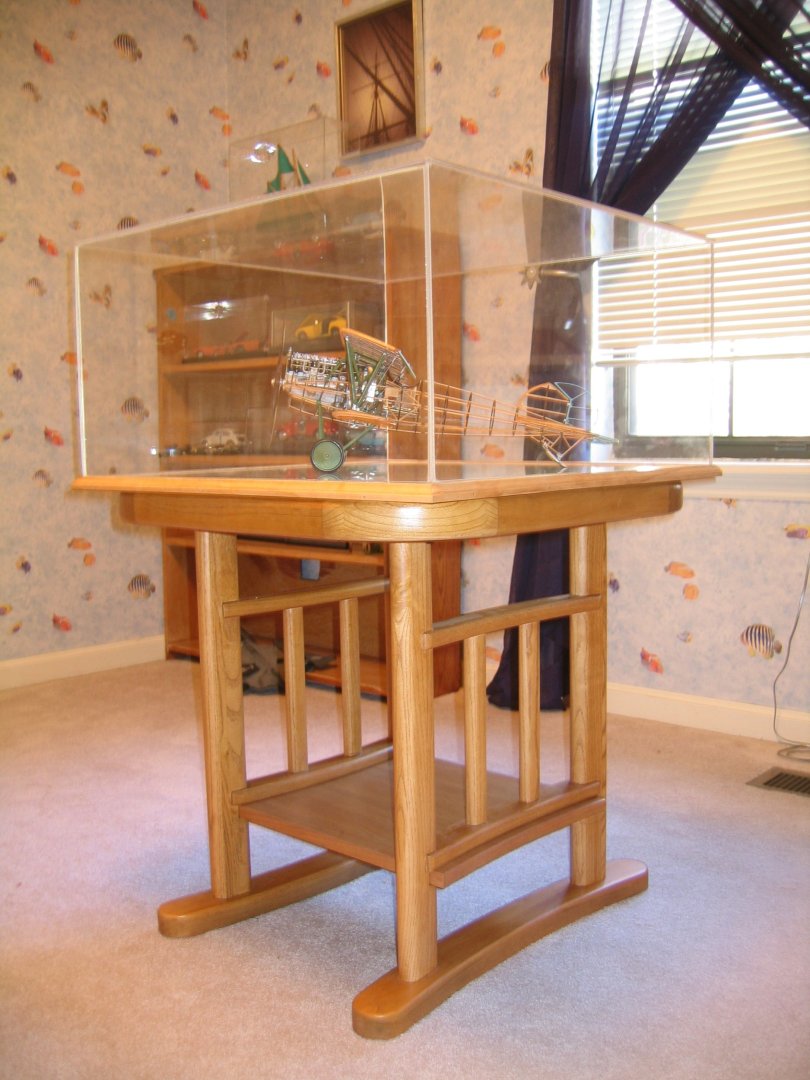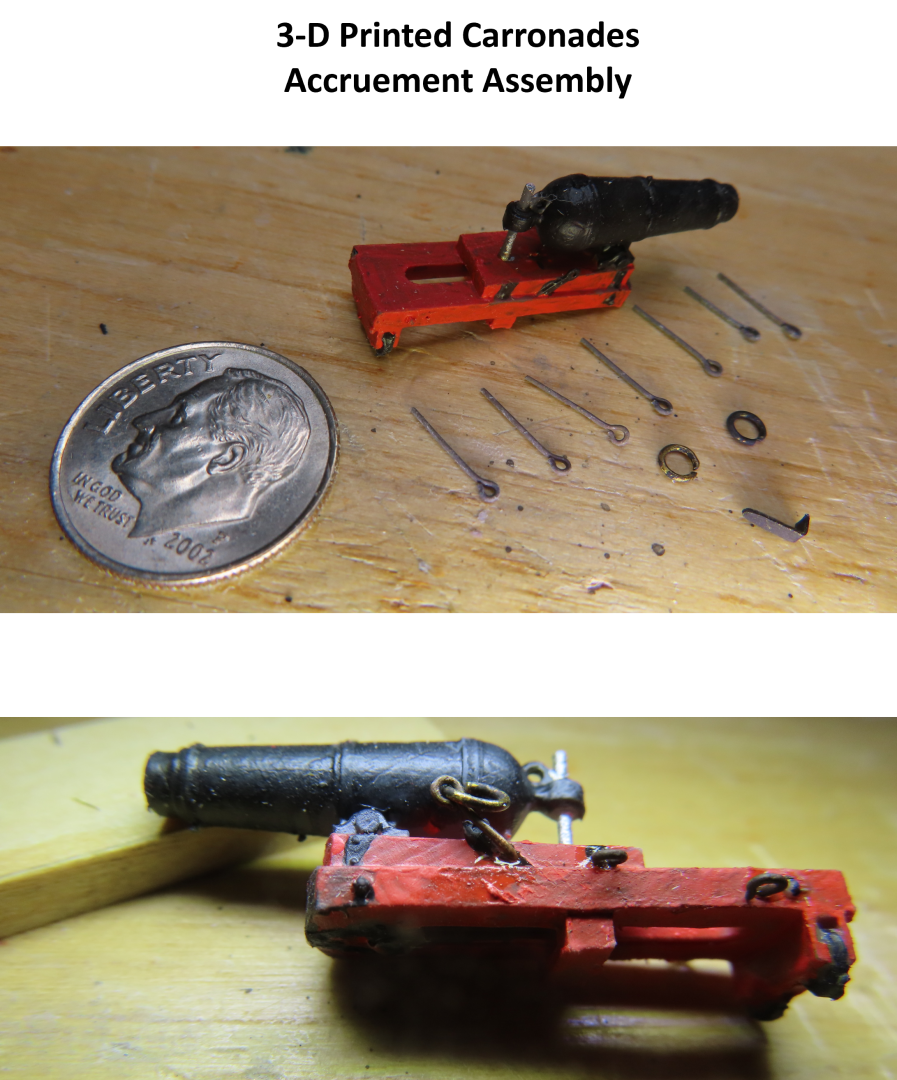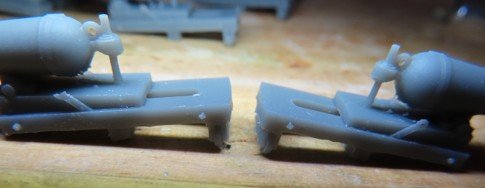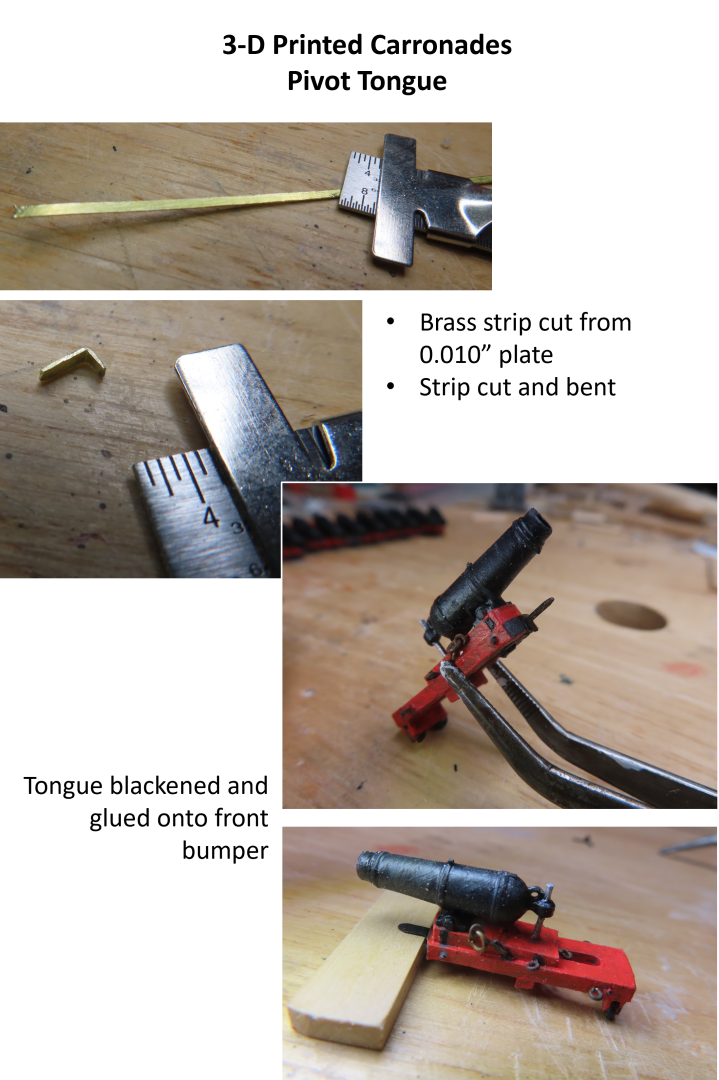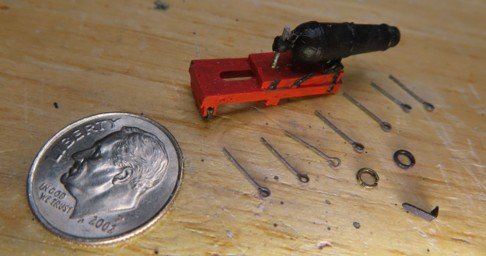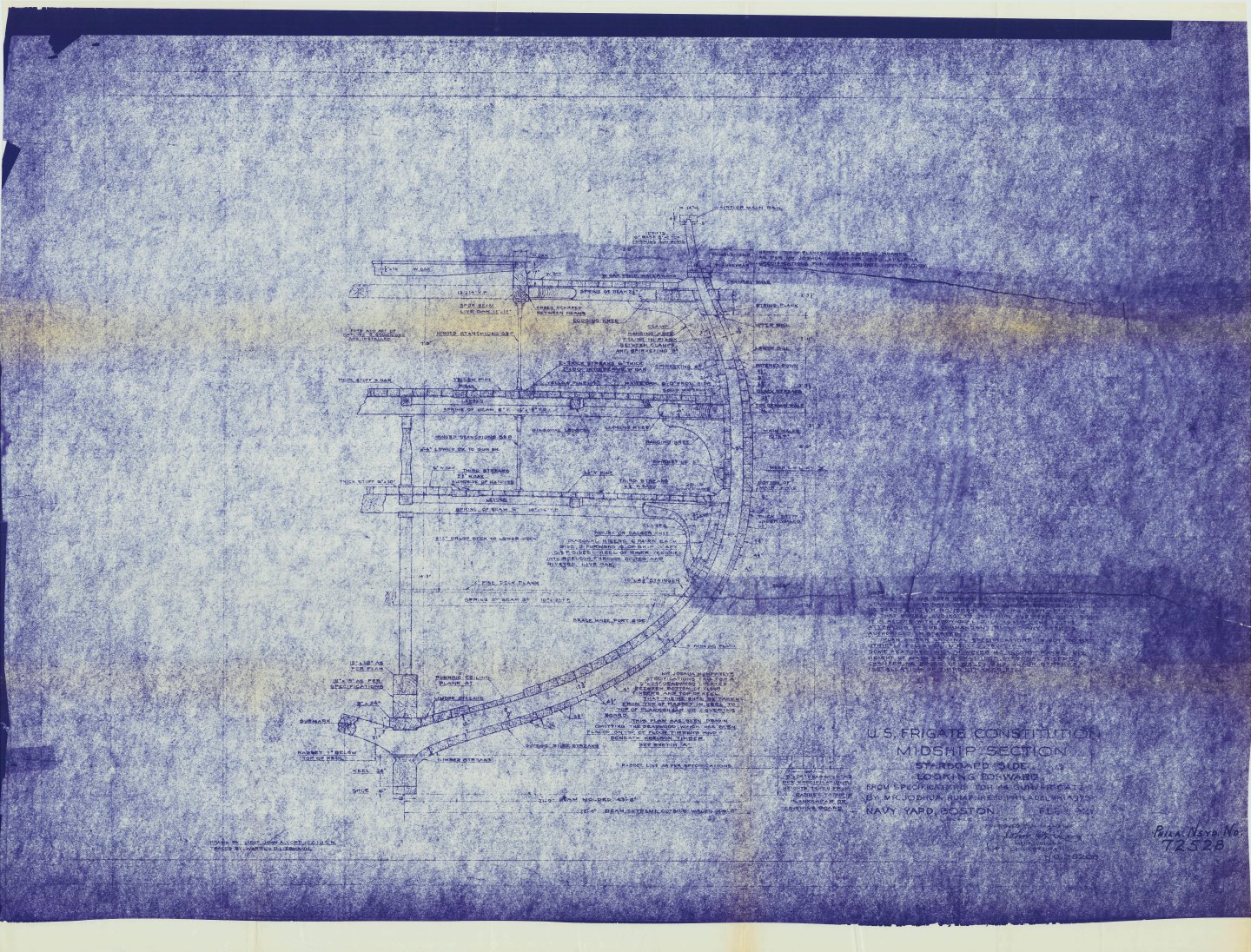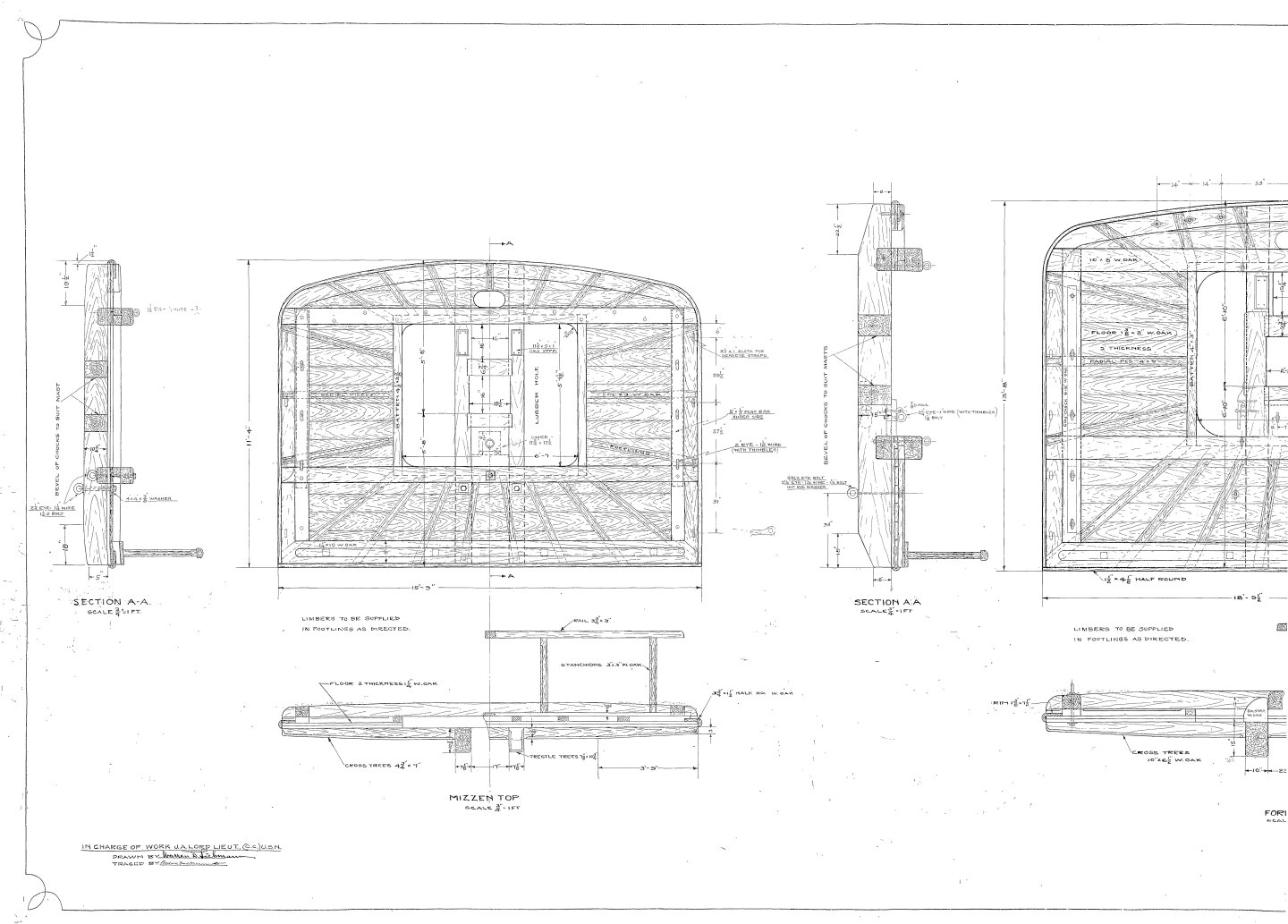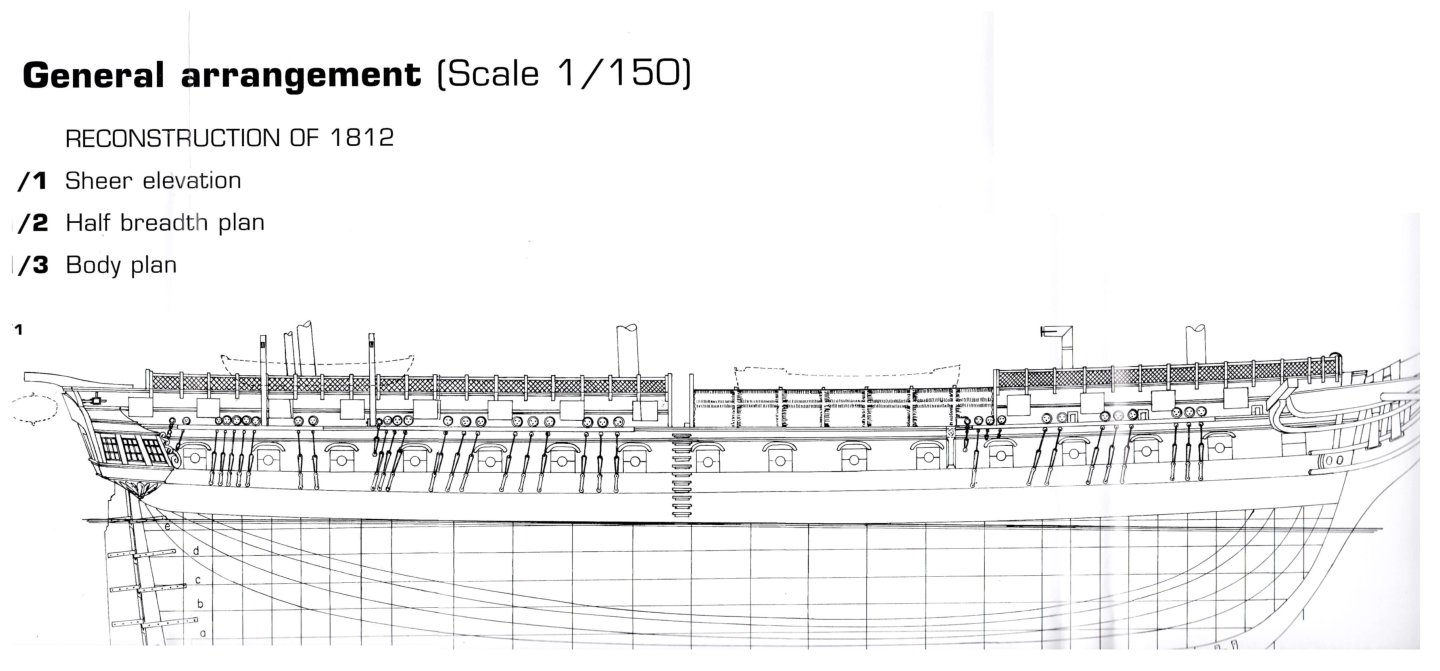-
Posts
2,625 -
Joined
-
Last visited
Content Type
Profiles
Forums
Gallery
Events
Everything posted by JSGerson
-
As I mentioned before, the Hull model does not show any stanchions, or rope handrails. I looked at all of the designated 1812 version and earlier, models that I had photos of (approx 25). I eliminated those models with closed hatches, those with no close-up views, and those models still incomplete in their fabrication, which left a total of 6 models to look at. About half of them had simple rope rails around the hatches and along the ladders. The stanchions were always dark (color or B&W images) but the rope was both light or dark in color. All of this doesn't mean anything because the level of detail provided was the builder's choice. My personal assumption, which has no factual or historic basis, is that there was at least a rope barrier around the hatchways when they were open and probably on the ladders. If they existed, I would imagine that their specific design varied over time like everything else on the ship. Jon
-
The Hull model does not show any railings. That does not mean there wasn't anything there. If memory serves me correctly, I believe the brass railings were installed when the Constitution was made into a training and receiving ship around 1882, but don't quote me on that. The earliest pictures I have are from the 1890s. Jon
-
Thanks for the kudos guys! I used to use Blacken-It with good results, but as far as I know it's not available anymore. So, I switched to JAX Black, Brass, Bronze, & Copper Blackener. Typically, I soak the metal item in some mild acid for a few minutes to remove any oils from the metal, rinse in water, and then soak in the blacken solution (1/2 water & 1/2 blackener) for about 5 - 10 minutes while keeping an eye on it. But for some reason, the black coating flaked off this time. Jon
-
Spar Deck Long Guns Finally, the last armament to be fabricated for the spar deck were the two 24 pounder long guns. These were made almost identical to the guns for the gun deck. I say “almost” because this time I used the laser cut carriage sides provided by the kit, If you may remember, I had to scratch make my own sides for the gun deck guns because for some reason, the gun ports were a bit too high relative to the gun deck planking and I had to compensate with a slightly taller gun carriage. Which by the way, was closer to the US Navy plans version. I made all the other pieces as before and assembled them using the jig I used before. However, the jig had to be adjusted a bit because my scratch made sides were a bit different thickness than the laser cut ones. Also, this time, the blackening didn’t seem to stick as well as last time, so I will have to use some touch black paint where the shiny brass shows through. Still to be done. I will glue down the quoin when the guns are aligned properly and glued into their final positions. Till then, rigging the guns is next.
-

USS Constitution by mtbediz - 1:76
JSGerson replied to mtbediz's topic in - Build logs for subjects built 1751 - 1800
Actually, the 1927 plans I sent you earlier, shows seven braces in the main top. Why it was removed as shown in recent photo is a mystery to me. If you won't tell anybody that it changed, I won't either😁 Jon -

USS Constitution by mtbediz - 1:76
JSGerson replied to mtbediz's topic in - Build logs for subjects built 1751 - 1800
They look beautiful!....However, I noticed a discrepancy between yours and the the actual tops. Two of your tops (Fore & Mizzen) match the real ones. However, the main top does not have the radial brace in front of the oval hole. Below are two images. The single top image is the foremast top. The other image shows the main and mizzen tops. You can see clearly, the main top only has six radial braces not seven. I hope that doesn't mess you up too much. Jon -
For the most part, the chainplates are aligned and angled as determined by their attached stays. This means they are not necessarily perpendicular to the chanels. Each angled chainplate has a slightly different angle from its neighbor. IMHO, "fudging" the slots to allow angling of the deadeyes should not be noticeable provided any slot widening is done on the bottom side of the channel where it can't be seen. Unless you are trying to be super realistic, which you are not, the slight inconsistencies created by the model maker with the real world are acceptable in a model. Jon
-
Ahh yes, the Model Airways 1917 Albatross d.Va. I finished building that in 2007. Around 2020 or so a strange phenomena took place. The Britannia metal wheel struts collapsed in veeerrrrrryyyy slow motion. I didn't notice it because it happened over years and then I did. I just wasn't looking at very often. The model was kept in case, in an air condition room, out of direct sunlight. I must assume it was the weight of the model that was too heavy for the soft Britannia struts. So, I got the kit box back out, looked up the part number and requested a replacement from Model Expo, which to their credit they did. But as I thought more about it, I decided why go through all the trouble and effort to replace the Britannia struts which collapsed, with another set of Britannia struts making the same mistake. Therefore, I used the replacement Britannia struts as a template for new stronger Boxwood ones. Now the problem is how to dismantle the model and rigging enough to remove the deformed struts, while not damaging anything else. I will need to create and fabricate a rig to support the model upside down so as to not putting negative stress on the wings. When the struts were originally installed, the wings were not attached. A relatively easy process. By the way, those coins did not come out of pocket, but out of my old coin jar. Heck, I don't even recognize paper money any more other than a one dollar bill, the only bill that hasn't changed over the years. I live and die by the credit card and electronic banking and bill paying. The only place I spend cash is at my barber shop which is all they accept. Yes, an old fashioned barber shop, not a hair salon. Jon
-
As it turned out, the 3-D misprinted/broken recoil rope eye bolts for are a moot point as I had to remove all of them anyways. They were very fragile, delicate, and broke when I tried to attach the required ring to them. The plastic is very stiff, inflexible, and will snap if any stress is applied to them. Each of the 20 carronades required seven 1/32” eyebolts, one each for the two tackles per side, one for the recoil rope per side, and one on the rear of the gun slide. The recoil eyebolts have a ring passing through their eye through which the recoil ropes are threaded. These were replaced with trimmed eyebolts bent 90° with the attached ring. All 20 carronades were dry positioned on the spar deck ready to be rigged. First, I need to fabricate the two long guns to complete the spar deck’s armament.
-

USS Constitution by mtbediz - 1:76
JSGerson replied to mtbediz's topic in - Build logs for subjects built 1751 - 1800
Ken Forman is always a wealth of experience and knowledge. Jon -

USS Constitution by mtbediz - 1:76
JSGerson replied to mtbediz's topic in - Build logs for subjects built 1751 - 1800
You got the brass bands real snug to the mast without any voids and they look great. Any particular method to accomplish that? My first thought when I saw the pictures before I read the post was that you sliced up a brass tube, but you obviously didn't do that. Well done!! Jon -
A single wire around the the deadeye should work perfectly fine. No one will aware what is stropping the deadeye or notice, much less know, that it is not a double wire like the real ship. There will be a whole more interesting things to look at on the model when you are done. You are making a model, not a miniature replica. You've got s good design for your deadeye to strap connection. They will be very pretty when done. Jon
-
Marcus,K.: I took another look at 35208 and you are correct, it is "risers." I stand corrected.🤔
- 233 replies
-
- Model Shipways
- constitution
-
(and 5 more)
Tagged with:
-
From what I surmised from the images Ken provided, he did not attached the deadeyes to the chain plates. He twisted the wires stropping the deadeyes creating a tail which was then inserted into the channel. The chain plates were laid on top of the tails and extended to the hull. The "joint" was eventually covered over by the channel cap hiding the false connection. A little bit of modeler's sleight of hand.
-
I read it the same way but made some minor corrections (typos, different interpretation of words, & omissions) in red. Note the term "viz." means "in other words" (I had to look that up). This plan has been drawn as a matter of record and comparison with Navy Yard Boston Midship Section Plan No 34526 BU C.S.A No 130241 which has been approved by that bureau subject to checking and revision to bring it in accord with additional data as may come to the attention of the commandant before any work is authorized and or started. Plan A ?? per original specification is not to be strictly followed in reconstruction. Some features will however be incorporated viz.: height of main hatch coamings, diagonal risers chamfering edges of wales and black strakes installation of third strakes etc. Whether this helps or not, 🫤 I don't know.
- 233 replies
-
- Model Shipways
- constitution
-
(and 5 more)
Tagged with:
-

USS Constitution by mtbediz - 1:76
JSGerson replied to mtbediz's topic in - Build logs for subjects built 1751 - 1800
Always glad to be of help Jon -

USS Constitution by mtbediz - 1:76
JSGerson replied to mtbediz's topic in - Build logs for subjects built 1751 - 1800
I'm surprised that the MS plans don't provide plans for these parts. I copied what was provided in the kit with a centimeter scale for your convenience. Jon -
- 233 replies
-
- Model Shipways
- constitution
-
(and 5 more)
Tagged with:
-

USS Constitution by mtbediz - 1:76
JSGerson replied to mtbediz's topic in - Build logs for subjects built 1751 - 1800
-
The MS plans are based on the 1927-31 renovation with some more recent details scattered about. What makes this renovation unique is that it added the top gallant rail, which has since been removed in more recent renovations. I checked Marguardt's AOS book on the USS Constitution and the 1812 configuration. Surprisingly, it showed no sheaves. Sheaves did appear in later configurations of the hull that he presented. As an aside, I can't believe/understand why sheaves would be on the gun deck. You're in the midst of battle, the command is to move the sails. You are going to have run down a ladder to another deck to pull on ropes and get your subsequent commands relayed to you through one or more people with the noise of a battle in a confined space? Doesn't make sense to me. To be sure, I would DM MrBlueJacket for clarification/explanation. He will respond to you. Jon
-
I feel like I have built up an unwarranted reputation. Yes, I have amassed a wealth of pictures and plans, but I am no expert. When it comes to interpreting historical designs, I am a babe in the woods. I wish I could help, but the USS Constitution is an enigma and full of contradictions. I have yet to see a full set of plans for just one era. What I have reminds me of that old Johnny Cash song about building a car one piece at a time with parts from different years. That what I have, plans from different eras but not one complete set. Sorry I'm not more helpful Jon
- 233 replies
-
- Model Shipways
- constitution
-
(and 5 more)
Tagged with:
-
I got curious by your statement, "Both sheaves are at gun deck level..." According to Model Shipway's plans (see attached) , there are 4 (1927 version) sheaves per side in the spar deck bulwarks, not the gun deck. I believe you misspoked. The question as whether to include them or not to me at least, is a question of scale. At 1:96 they will disappear as they are black on black and very small. If it is a question of accuracy, yes I would put them in, just by drilling a couple of holes and a groove between them to simulate the sheaves. The sheaves are there whether or not the ship is rigged for sails; it's part of the hull. The same argument could be made about the bow and stern boomkins. They are used only for the sail rigging. My model won't have sails, but I have added boomkins to the bow so far in my build. This is only my opinion, I like detail. It is what separates one model from another. I hope this helps Jon
About us
Modelshipworld - Advancing Ship Modeling through Research
SSL Secured
Your security is important for us so this Website is SSL-Secured
NRG Mailing Address
Nautical Research Guild
237 South Lincoln Street
Westmont IL, 60559-1917
Model Ship World ® and the MSW logo are Registered Trademarks, and belong to the Nautical Research Guild (United States Patent and Trademark Office: No. 6,929,264 & No. 6,929,274, registered Dec. 20, 2022)
Helpful Links
About the NRG
If you enjoy building ship models that are historically accurate as well as beautiful, then The Nautical Research Guild (NRG) is just right for you.
The Guild is a non-profit educational organization whose mission is to “Advance Ship Modeling Through Research”. We provide support to our members in their efforts to raise the quality of their model ships.
The Nautical Research Guild has published our world-renowned quarterly magazine, The Nautical Research Journal, since 1955. The pages of the Journal are full of articles by accomplished ship modelers who show you how they create those exquisite details on their models, and by maritime historians who show you the correct details to build. The Journal is available in both print and digital editions. Go to the NRG web site (www.thenrg.org) to download a complimentary digital copy of the Journal. The NRG also publishes plan sets, books and compilations of back issues of the Journal and the former Ships in Scale and Model Ship Builder magazines.









